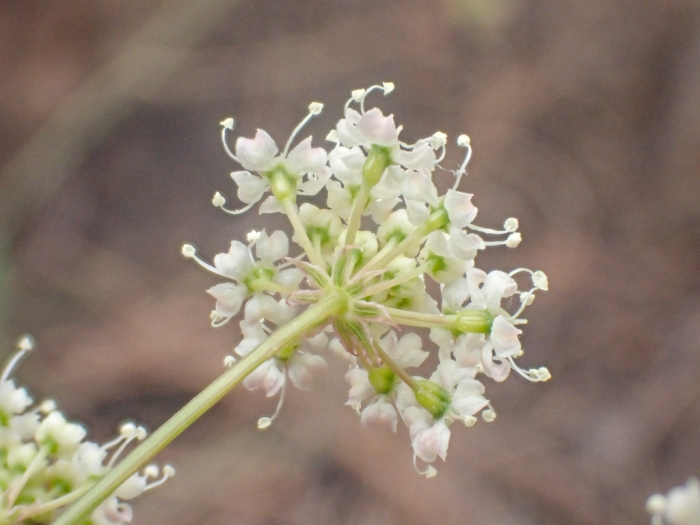California Yampah
(Perideridia californica)
California Yampah (Perideridia californica)
/
/

Chloe and Trevor Van Loon
CC BY 4.0
Image By:
Chloe and Trevor Van Loon
Recorded By:
Copyright:
CC BY 4.0
Copyright Notice:
Photo by: Chloe and Trevor Van Loon | License Type: CC BY 4.0 | License URL: http://creativecommons.org/licenses/by/4.0/ | Rights Holder: Chloe and Trevor Van Loon | Publisher: iNaturalist | Date Created: 2021-04-25T13:29:59-07:00 |

























Estimated Native Range
Summary
Perideridia californica, commonly known as California yampah, is a perennial herb native to the grasslands, meadows, and open woodlands of the Central Coast Ranges and Sierra Nevada foothills in California. It can reach heights of up to 5 feet (1.5 meters) and is characterized by its compound umbels of small white flowers that bloom from late spring to early summer. The flowers are arranged in a distinctive pattern that is attractive to a variety of pollinators. The plant also produces ribbed, oblong-shaped fruits that are typically not a prominent feature. California yampah’s foliage is feathery and fern-like, adding a delicate texture to garden settings.
California yampah is valued for its adaptability to moist environments and its use in naturalistic plantings. It is often found in riparian zones and wet meadows, where it contributes to the ecological health of these areas. In cultivation, it prefers full sun to part shade and requires soils with good moisture retention but also adequate drainage to prevent root rot. While not commonly used in traditional garden settings, it can be a unique addition to native plant gardens or restoration projects. It is relatively low maintenance once established, but gardeners should be aware that it may require additional watering during prolonged dry periods. There are no significant disease or pest issues associated with this plant, making it a trouble-free choice for suitable habitats.CC BY-SA 4.0
California yampah is valued for its adaptability to moist environments and its use in naturalistic plantings. It is often found in riparian zones and wet meadows, where it contributes to the ecological health of these areas. In cultivation, it prefers full sun to part shade and requires soils with good moisture retention but also adequate drainage to prevent root rot. While not commonly used in traditional garden settings, it can be a unique addition to native plant gardens or restoration projects. It is relatively low maintenance once established, but gardeners should be aware that it may require additional watering during prolonged dry periods. There are no significant disease or pest issues associated with this plant, making it a trouble-free choice for suitable habitats.CC BY-SA 4.0
Plant Description
- Plant Type: Herb
- Height: 1-2 feet
- Width: 0.5-1 feet
- Growth Rate: Moderate
- Flower Color: White
- Flowering Season: Spring
- Leaf Retention: Deciduous
Growth Requirements
- Sun: Part Shade, Full Shade
- Water: Medium
- Drainage: Medium
Common Uses
Bee Garden, Bird Garden, Edible*Disclaimer: Easyscape's listed plant edibility is for informational use. Always verify the safety and proper identification of any plant before consumption., Low Maintenance
Natural Habitat
Native to grasslands, meadows, and open woodlands of the Central Coast Ranges and Sierra Nevada foothills
Other Names
Common Names: California Perideridia
Scientific Names: , Perideridia californica, Chaerophyllum californicum, Conopodium californicum, Eulophus californicus, Eulophus californicus var. sanctorum, Podosciadium californicum,
GBIF Accepted Name: